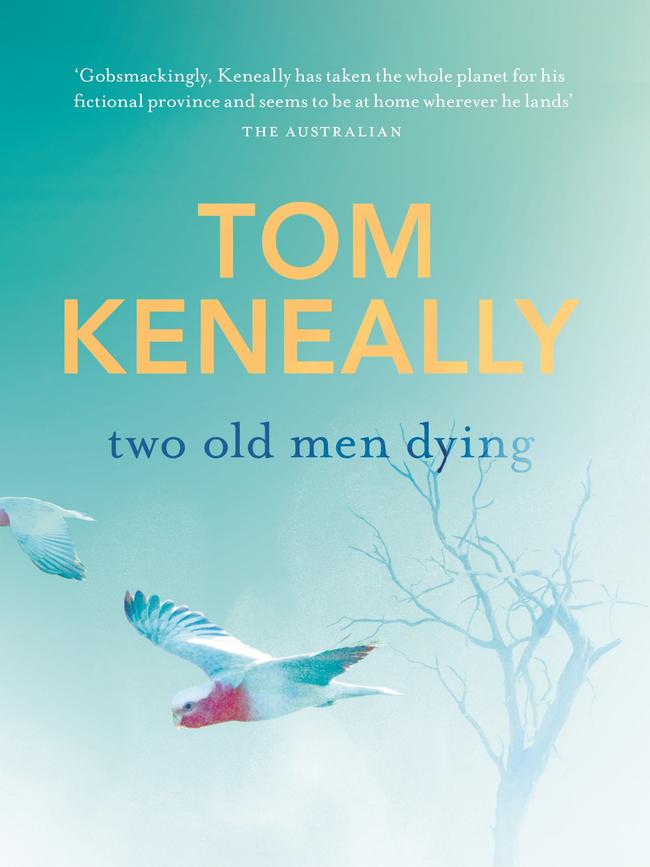Keneally addresses vices of past voice
Although he is well into his 80s, it is hard to discern in Thomas Keneally’s work what we’ve come to call ‘‘late style”.

Even though the author is well into his 80s and has almost 40 novels under his belt, it is hard to discern in Thomas Keneally’s recent work what we’ve come to call ‘‘late style”. But this is not because his writing hasn’t evolved, or his world view.
Keneally’s early novels seem touched by the mid-century agon of Iris Murdoch, Graham Greene and Patrick White. Back then, he was a cautiously ambitious, consciously elegant craftsman, evidently damaged by guilt and residual religious conscience. Keneally was still, in the words of an early critic, ‘‘writing the priesthood out of his guts”.
To reduce such a vast and various body of work to a single set of stylistic descriptors is ludicrous and ultimately deforming. What can be fairly said is that Keneally’s later works are, in general, lighter in spirit (even when they deal with terrible subjects). They are wiser, wittier, more freewheeling in manner and form.
So late style, with its intimations of finality, its premonitory hauntings, seems inapplicable in this fictional instance. Two Old Men Dying is just that, a blunt meditation on last things, but still electric with life, passion and appetite. This is a novel in which the fact of extinction is met with irrepressible human vigour: not in refusal of mortality, but in acknowledgment of Ludwig Wittgenstein’s dictum: ‘‘Death is not an event in life: we do not live to experience death.”
The first of the two deaths the novel explores bears out this paradox. The discovery of the bones of a man who lived and died 42,000 years ago on the shores of a dry lake in inland NSW was a crucial moment in recent Australian history: it affirmed the immemorial presence of indigenous Australians on the continent.
That continuous occupation of place brought to life countless generations of peoples we had not known existed (indigenous Australians had always known this to be the case). It reconfigured the continent’s deep-time backstory and, for those willing to ponder, it had profound implications for all of us in the present.

Such venerable and extensive relationships between people and place belittles White Australia’s claims to ownership. Like dossers who have broken into an ancient cathedral and, having raided the vestry, decide to assert squatter’s rights.
In Two Old Men Dying Keneally takes the story of Mungo Man — though he renames him Learned Man — and uses his prodigious imagination to inhabit the body and mind of the living figure, one who moved through a continent of balance and plenty, cultural sophistication and implacable law. It is a world navigated by song and looked over from above by the Heroes, spirits of the dead who speak directly to the living through dreams.
This sort of paleoanthropology is difficult to carry off. The author must translate language, belief systems, cultural matrixes and all manner of sundry details in a way that is recognisably human in our modern context without wrenching those creations out of their Pleistocene moment, making them orphans in time or puppets for contemporary concerns.
With one eye, perhaps, on William Golding’s 1955 novel of Neanderthal woman and men, The Inheritors, Keneally adopts a single point-of-view character and made him lucid, warm, intelligent and conscious of his responsibility as a Law Man of his tribe. The language in this half of the novel is simple and unadorned, though more poetic than the half set in the present.
Keneally has lent Learned Man both nobility and masculine frailty; he has done his creation the honour of cutting him from whole human cloth. And this is important because Learned Man’s life, with its challenges and rewards, dolours and delights, is intended to rhyme across the eons with the existence of another, very modern man. Any commonality between the two is wholly intended.
That other character is Shelby Apples (yes, really), a documentary filmmaker of repute, now in his 80s and recently diagnosed with oesophageal cancer. The potential death sentence handed down by his young medico inspires in Shelby not horror but a kind of amused perplexity: mortality brings the long arc of his career — along with his friendships, lovers real and imagined, his beloved wife and daughters — into sharp retrospective focus.
Shelby began his career proper with a film about the discovery of Learned Man. He walks the same ground as his long-lost subject and in doing so establishes an empathetic relation that appears to dissolve time. This distant kinship of personality and purpose will link their fates together in the decades to come.
It is a fruitful, fascinating narrative strategy. The story of Learned Man serves as a pure subtitle to the more technologically mediated, noisy and restless existence of Shelby as he travels the world: making films, doing good, screwing up. There is a balance and austere quality to Learned Man’s life and his relations with others that make Shelby Apple sometimes seem thin and discomposed.
That said, Shelby has many moments of decency and care; he is a good man and modest for one so lauded. His life matches, in spirit and sometimes in fact, Keneally’s own. When, for instance, the young Shelby loses his close friend and filmmaking collaborator during a period of being embedded with Australian troops in Vietnam, the subsequent documentary wins an Academy Award. Shelby accepts it with bitter and remorseful tears.
It is hard not to read this invention on the light of Keneally’s huge success with Schindler’s Ark, a narrative built on terrible pain suffered by others, eventually made into a film whose immense accomplishment was doubtless viewed by Keneally with a mixture of awe, gratitude and justifiable scepticism.
For Learned Man, the primal loss comes with the death of his son during a hunt for what sounds like a marsupial tapir, armed with terrible claws and known as ‘‘the slicer”. It is a strange feeling to encounter such consonance in feeling, such solidarity in grief, across an immense chronological divide.
As the reader moves deeper into each man’s life — they come to understand the richness of their marital relationships, or appreciate the ambivalence with which both take on roles of seniority and responsibility in their communities, or understand the care and tact with which they engage with neighbours or strangers far from home — the connection between two distinct, removed individuals begins to blur and coalesce.
This is a beautiful manner of approach: though, given the temper of the times, a potentially controversial one. The current moment is dubious, even hostile, to authors writing in voices that are removed from their own. There is an understandable sense that, when a community has experienced great suffering and dispossession, whether in the American South or the Australian centre, those who seek to inhabit their voices who cannot claim kinship are merely exacerbating an original pain.
Keneally is more conscious than most regarding the problem that emerges from his decision. He has publicly recanted his depiction of the violent Aboriginal murderer at the heart of his most controversial novel, The Chant of Jimmy Blacksmith (1972), saying he would never again presume to write from within a black consciousness as a white European.
And in this fiction he has kept that promise, despite inhabiting Learned Man from the inside. Keneally argues that there is a difference between occupying the mind of an indigenous man suffering under a harsh and unjust regime of racial politics in the early 1900s, and imagining the inner life of an individual who lived at such a temporal remove from us that he constitutes an Adamic figure: not black, not white, rather an all-father for whom race is a construct without meaning or utility.
Two Old Men Dying is the account of two exceptional men who have lived ordinary lives: ordinary in the sense that they may be viewed as universal, as experiences of what it is to be a man, with all the virtues and humiliations that attend that station, across time and space.
What Keneally has done in this intensely personal, hugely inventive and often moving novel is to use his talents to undermine this tendency. He employs at some personal cost his own experience to highlight the ways in which we are brothers and sisters, for better and worse, under the skin. Such universalism is unfashionable just now. It may also be the only thing that will save us.
Geordie Williamson is The Australian’s chief literary critic.




To join the conversation, please log in. Don't have an account? Register
Join the conversation, you are commenting as Logout